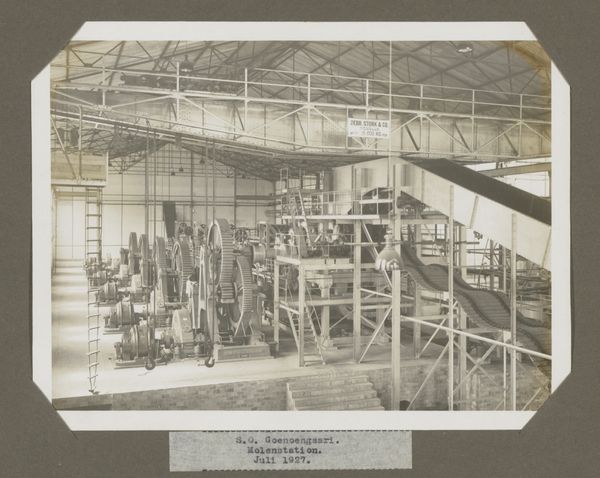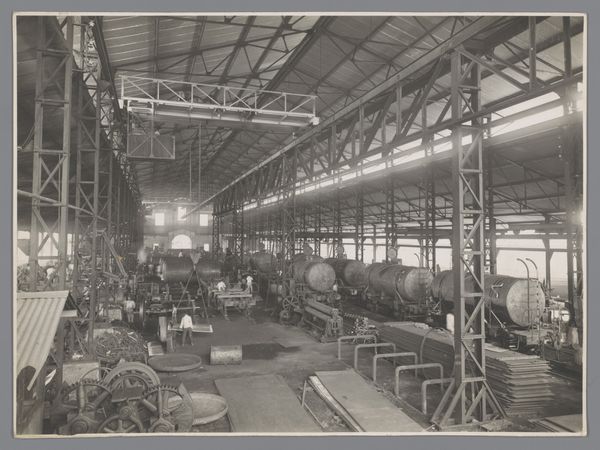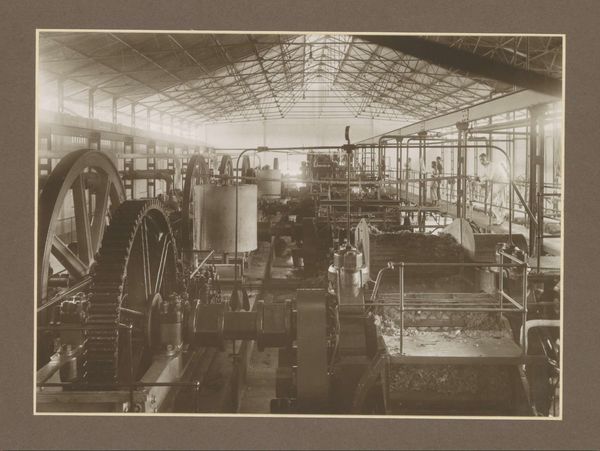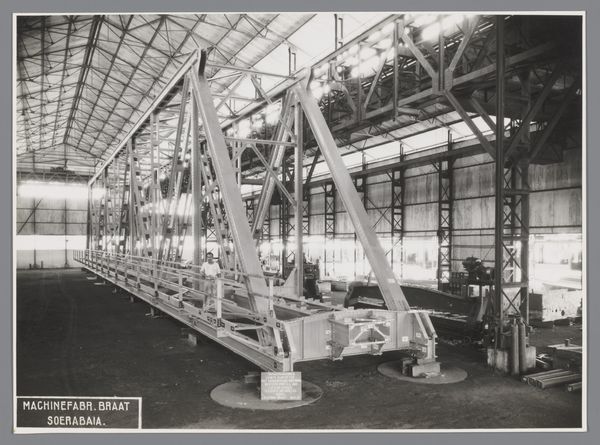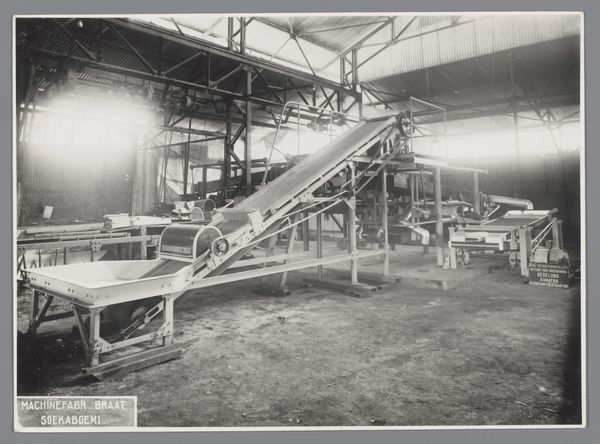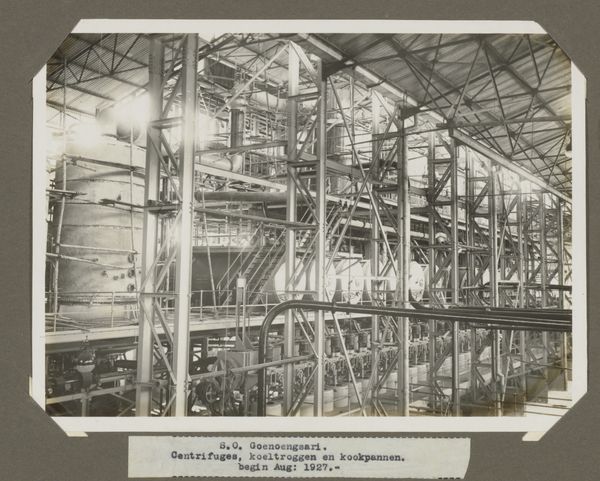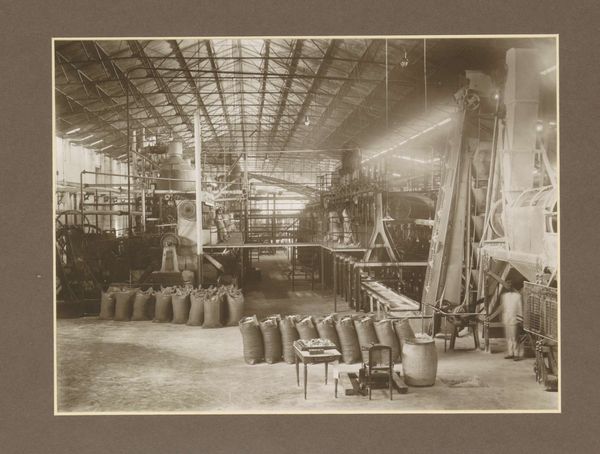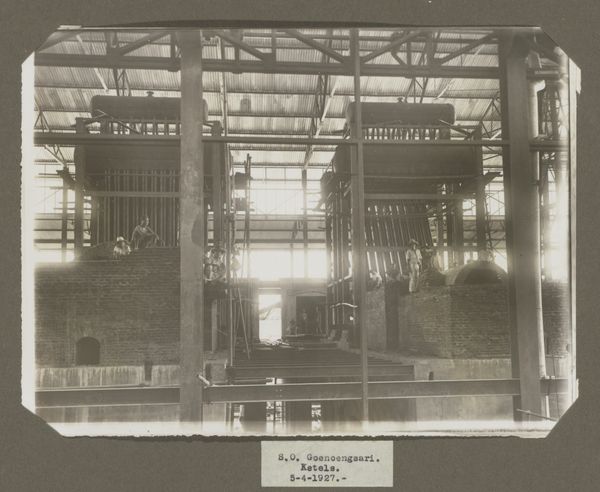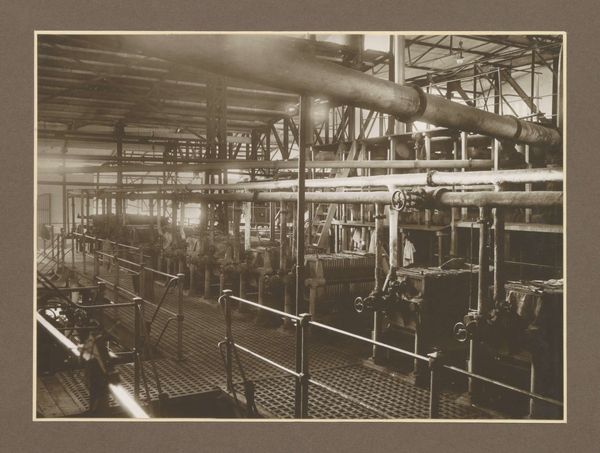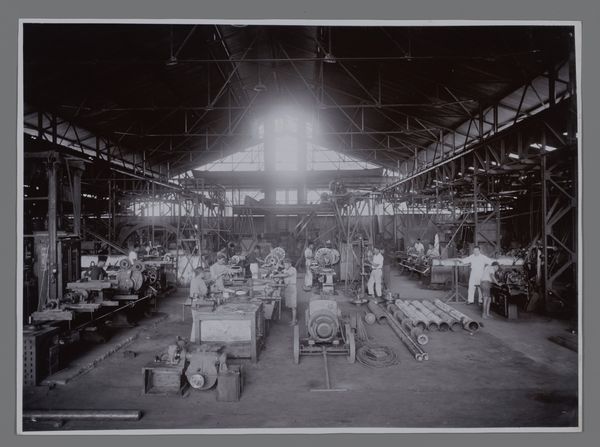
Chinese contractarbeiders sorteren tabaksbladeren in een fermenteerschuur, Sumatra 1889 - 1900
0:00
0:00
carljkleingrothe
Rijksmuseum
photography, gelatin-silver-print
#
landscape
#
photography
#
orientalism
#
gelatin-silver-print
#
genre-painting
#
realism
Dimensions: height 178 mm, width 284 mm
Copyright: Rijks Museum: Open Domain
Curator: Here we have a fascinating gelatin silver print taken between 1889 and 1900, attributed to Carl J. Kleingrothe. The title gives us context: "Chinese contract labourers sorting tobacco leaves in a fermentation shed, Sumatra." Editor: It strikes me as overwhelmingly bleak. The figures are dwarfed by the industrial space. Rows upon rows of laborers…it feels like a visual representation of dehumanization. Curator: The composition certainly speaks to the power dynamics at play. Note how the photographer positions the overseers, standing and watching, contrasting with the seated laborers. It’s a carefully constructed tableau, showcasing the colonial enterprise. Editor: And that vast, cavernous space – the metal beams like some monstrous ribcage. It's intended, I suspect, to suggest efficiency and scale, but it evokes more of a sense of oppression. The tobacco becomes almost incidental to the depiction of labor and control. Curator: Indeed. This photograph is not simply a record of tobacco production, but a document reflecting the socio-economic structure of colonial Sumatra. It embodies a fascination with the "exotic" East but within a rigid, Western framework of management and exploitation. We see that visual strategy also evident within so-called Orientalist painting of this era. Editor: The seated figures have a downcast posture, almost uniform across the row. I keep wondering, what are the iconic symbols within this image beyond simple subjugation? Could the tobacco leaves themselves stand for fleeting desires, literally fueling addiction but obtained by this human toll? Curator: An interesting interpretation, given the widespread global consumption that was happening at the time! The photographer, I think, may have aimed at a genre-painting feel. At the same time it’s rooted in what we now understand were very real political issues of colonialism. Editor: Thinking about the photographer, his decision to highlight such a vastness and employ this sharp realism has impact that will certainly stay with you. Curator: Absolutely, it provides valuable insights into that complex relationship between observer and observed during that period.
Comments
No comments
Be the first to comment and join the conversation on the ultimate creative platform.
